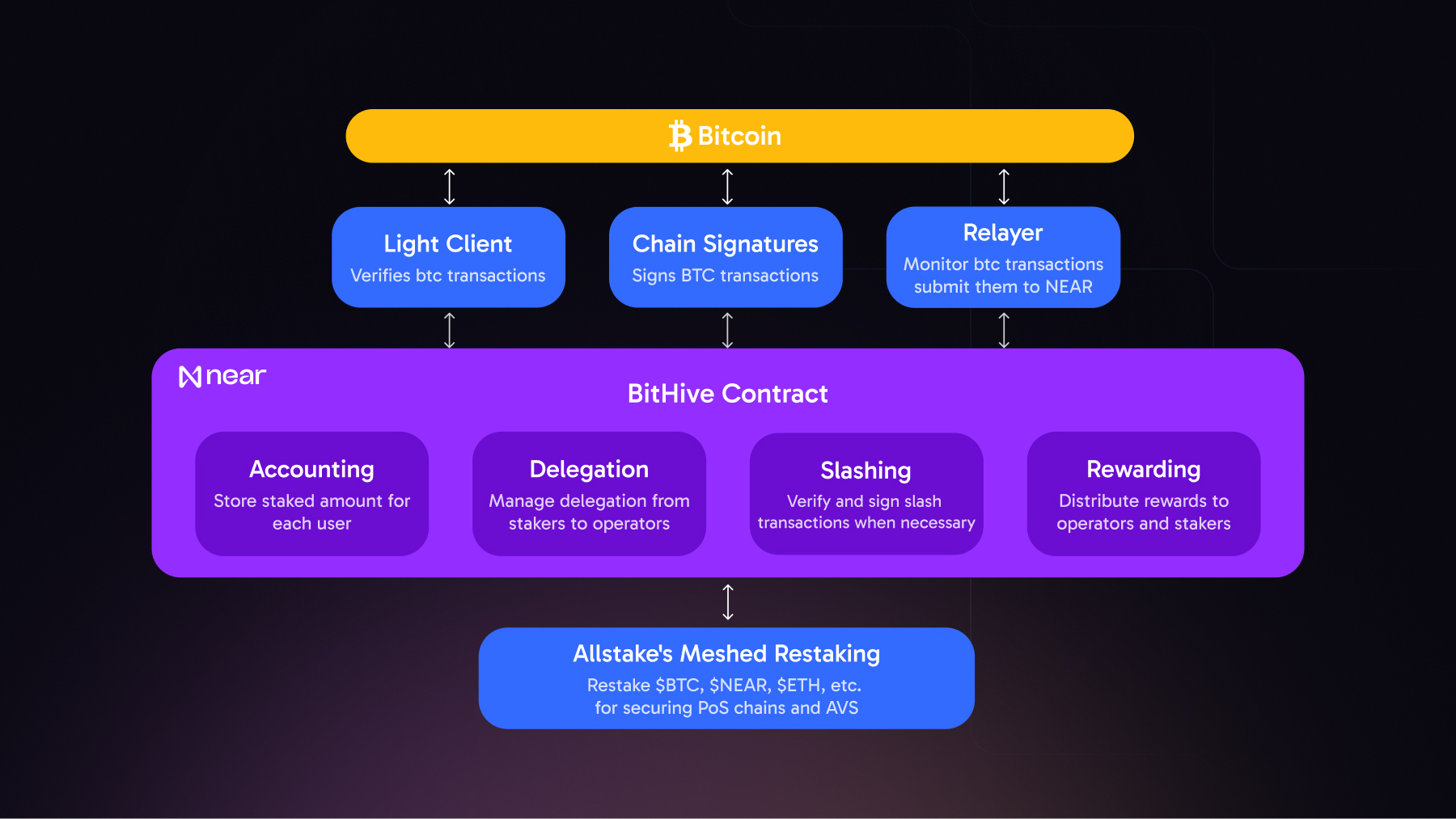BitHive Architecture

BitHive is built on top of the below modules:
Light Clients: enable the NEAR contracts to verify the legitimacy of Bitcoin transactions. This mechanism allows for a trust-minimized environment by processing transaction proofs without needing the full Bitcoin blockchain, ensuring security while streamlining verification.
Chain Signatures: allow the BitHive Contract to sign various staking related Bitcoin transactions. The management of BTC is performed securely and verifiably in a decentralized manner. For more information on Chain Signatures, please visit NEAR Docs.
Relayers: facilitate bi-directional message relay between NEAR and the Bitcoin chain, allowing for seamless communication across the chains. In addition to handling cross-chain messaging, the Relayer processes user requests, invoking the relevant methods in the BitHive contract for asset management and other related functions.
BitHive Contract
- Accounting: keeps a precise record of staked Bitcoin, including the amount of the BTC being staked and its status (e.g. waiting period before being able to be withdrawn). It provides a unified data interface for external parties and AVS to access up-to-date staking data.
- Delegation: manages the delegation of the BTC staked to operators. It tracks BTC staked to each operator, ensuring delegation processes are transparent and efficient.
- Slashing: if an operator misbehaves, the BitHive Contract enforces slashing penalties, after confirming the misconduct with AVS. The slashing results in the forfeiture of the BTC staked to the misbehaved operator, thereby reinforcing the security of the network.
- Rewards: AVS typically incentivize operators with tokens or points based on their performance. The Rewards module is responsible for distributing the appropriate amount of tokens to restakers and operators in alignment with AVS certifications.
Allstake’s Meshed Restaking
Allstake is a Meshed Restaking protocol on top of BitHive; it enables users to natively restake a wide range of assets (LSTs, LRTs, LP tokens, stablecoins, etc.) on multiple chains including NEAR, Ethereum, Solana, Ton, etc., and allows the PoS chains/AVS to use a combination of assets for shared security. For instance, a new AVS XYZ can accept $BTC, $NEAR, and its token $XYZ for shared security. This not only expands the use cases of staked $BTC, but also enables the PoS Chains/AVS to simultaneously seek the most robust security while capturing value for its tokens.